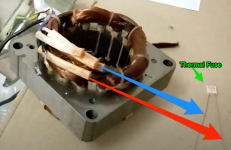Hi all,
I'm trying to fix my pedastool oscillating fan, it fails to spin anymore.
Its a honeywell type fan and is receiving power, it bleeps as its turned on with a button not fanny spinny!
I've located a capacitor as below , but don't know what 40/85/21 mean on the image , i suspect the capacitor to be the culprit and would like to replace it.

I've found a similar rated 1uf - 450v capacitor, but the numbers don't match exactly:
https://www.ebay.co.uk/itm/CBB61-mo...hash=item41f3e99ee7:m:mg3ZB1Dlw2SO-mx_x0OGdlA
20/070/21 instead of 40/85/21
What do those numbers mean and are they important? What is the best way to discharge said capacitor before I replace, turning the device on and waiting a while?
I'm trying to fix my pedastool oscillating fan, it fails to spin anymore.
Its a honeywell type fan and is receiving power, it bleeps as its turned on with a button not fanny spinny!
I've located a capacitor as below , but don't know what 40/85/21 mean on the image , i suspect the capacitor to be the culprit and would like to replace it.

I've found a similar rated 1uf - 450v capacitor, but the numbers don't match exactly:
https://www.ebay.co.uk/itm/CBB61-mo...hash=item41f3e99ee7:m:mg3ZB1Dlw2SO-mx_x0OGdlA
20/070/21 instead of 40/85/21
What do those numbers mean and are they important? What is the best way to discharge said capacitor before I replace, turning the device on and waiting a while?



